Chinese Cooking Methods, Techniques and Utensils
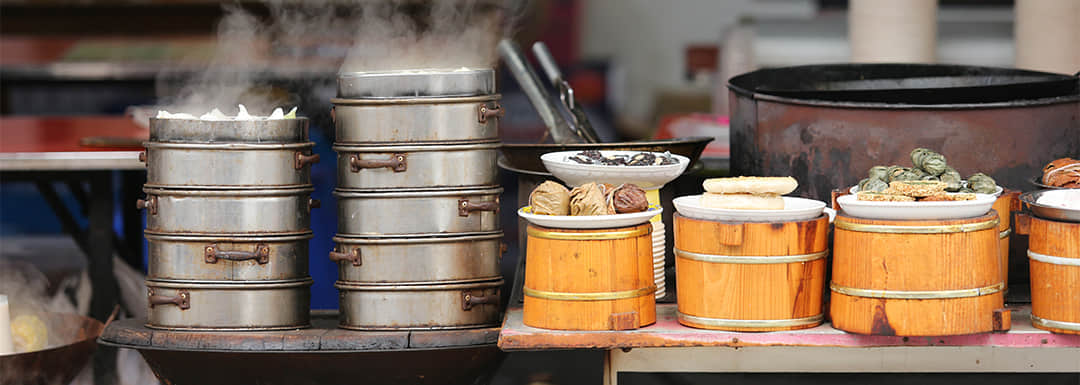
What do you need if you are going to cook Chinese food? Most people are likely to respond with a wok, some chopsticks, and maybe a bamboo steamer as the most obvious choices. But of course there are a lot more options with cooking food in the Chinese style.
The Most Common Cooking Methods in China
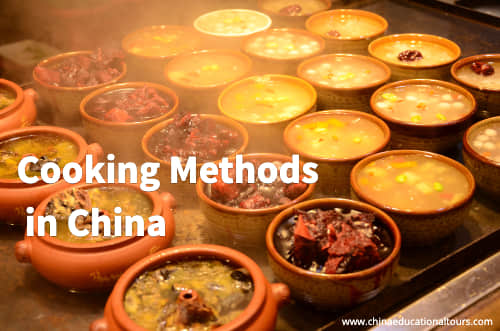
1. Stir frying 炒 chǎo
The best known and most frequently used cooking method is stir frying. Usually a wok is used at high heat, a small amount of edible oil is added, followed by ingredients and seasonings. Stir-fried meat is typically juicy and tasty, and vegetables are tender and crispy. With the ingredients carefully chopped, this method of cooking is not only healthy and tasty, but uses minimal fuel and food can be ready very quickly. It enables foods to soak in the flavors faster and preserves tastes, textures and colors, and, not surprisingly, it is used by chefs all over the world nowadays.
Some say that the wok is the heart of a Chinese kitchen. The wide and somewhat shallow wok with a domed lid needs to be able to get really hot – so it should not be the non-stick variety – and needs handles on both sides, sometimes one long and one short. To be able get the wok extra hot, some chefs use a wok ring over the gas flame, which also helps to stop the round-bottomed wok from sliding around.
Sharp cleavers and chopping knives and a good chopping board are needed for cutting, dicing, slicing, and shredding, anything from vegetables to meats. Spatulas, frying spoons and long chopsticks are a must for handling the food in the wok.
2. Steaming 蒸 zhēng
The other best-known special Chinese cooking method is steaming, which is used for dumplings, vegetables, seafood and chicken. The bamboo steamers used both in the kitchen and brought to the table to serve freshly steamed food are a common sight. These woven bamboo containers sit over a pot or wok of boiling water allowing the hot water vapor to pass through the base and cook the food efficiently without added oil or fat. The round bamboo boxes come in a full range of sizes from tiny hand-sized to large tubs half a meter across, and are popular overseas as well.
Although in western cuisine meat, such as fish, and vegetables are often cooked by steaming, it is the wheaten steamed buns and dumplings, popular in northern China, that are really special.
3. Deep frying 炸 zhà
In western countries, it is probably the deep fried foods that are often most popular in Chinese restaurants, and of course some deep fried foods are also served in China though not in such abundance.
Deep fried foods are submerged in hot oil, with a crisp, crunchy result. By first soaking medium sized chopped ingredients in seasoning such as ginger sauces or garlic paste, and then coating the pieces with corn starch before frying them in the hot oil, results in crisp and tender delicious food.
As well as the pot for deep frying, and abundant quantities of suitable oil, the chef needs what is known as a Chinese spider, or a slotted spoon or strainer, to successfully remove the cooked food from the hot oil.
4. Shallow frying 煎 jiān
Sometimes food is fried in less oil. For this kind of cooking less oil is used and less heat is applied. "Jian" is to heat the pot first, then brush the pan with cold oil, leave a small amount of base oil, and put in the ingredients, generally frying one side first, and then the other side, constantly shaking the pan when frying, so that the ingredients are heated evenly. When fried until fully cooked, the surface of the food is generally golden brown. The pieces need to be turned over half way through cooking, and so utensils such as long chopsticks, tongs, or spatula are needed to achieve that.
5. Red Stewing 烧 shāo
This is a uniquely Chinese method of cooking. Unlike stir-frying, it takes time, as the food is cooked over low heat or a small fire for anything up to an hour or two. The chopped meats are browned, along with soy sauce, sugar, wine, and spices such as ginger and cilantro and others. Later more seasonings are added as a soup or broth is created. The meat will be tender and the sauce is usually dark red or brown, hence the name.
6. Braising 炖 dùn
The Chinese aren’t the only people to employ braising as a cooking technique. This method is used to get larger pieces cooked to tender perfection. The ingredients and seasonings are all put together in a wok or saucepan with some water, and then simmered for up to an hour. Cornstarch is used to thicken the sauce after all the ingredients are well cooked.
7. Boiling 煮 zhǔ
Boiling takes less time than braising, and results in fresh, clear tasting dishes. It is used for ingredients that are small-sized and softer than those that would be braised, such as vegetables and tofu, and they are added to water along with appropriate seasonings. The water is then boiled until the food is ready.
8. Roasting 烤 kǎo
Roasted foods are cooked with dry heat, such as in an oven or over a charcoal flame grill. Seasonings are rubbed on to the outside, which gets drier and browned as a result, while the flavors are retained and enhanced. Meat and vegetables are commonly roasted.
In western culture, roasting often involves large cuts of meat roasted in an oven. But more commonly in China you will see small pieces of meat, vegetables, and even insects, on a skewer roasted over a charcoal grill and available in marketplaces and even on the street.
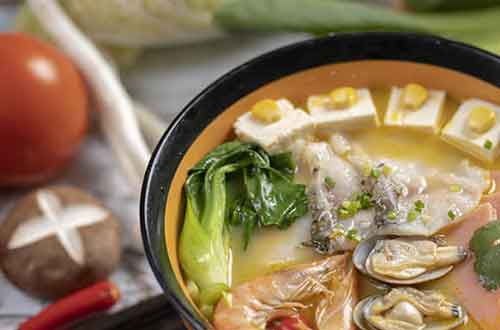 Chinese Food and Health
Chinese Food and Health 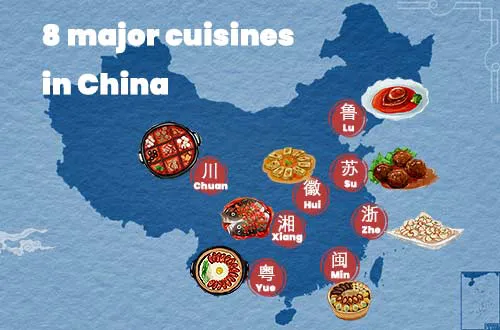 Regional Cuisines in China
Regional Cuisines in China 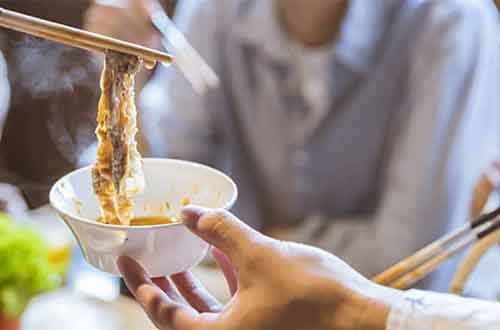 Restaurants, Customs and Etiquette
Restaurants, Customs and Etiquette 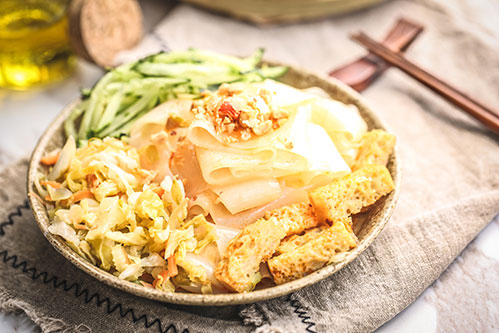 Xi'an Food Adventure
Xi'an Food Adventure